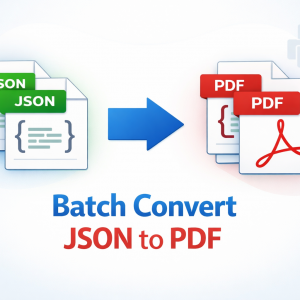In the complex ecosystem of healthcare, diagnostic coding plays a pivotal role—not just in classifying diseases but also in enabling accurate billing, tracking public health trends, and supporting continuity of care. In mental health care, precision in diagnosis and documentation is especially critical because of overlapping symptoms, comorbidities, and the high sensitivity of payer audits. This article offers a structured, in-depth guide to help clinicians, billing specialists, and administrators gain a clear grasp of Understanding ICD-10 Codes for mental health services. We also touch on how these principles apply in specific settings like mental health billing in New York City.
What Are ICD-10 Codes and Why They Matter
ICD-10 stands for the International Classification of Diseases, 10th Revision—a globally adopted system developed by the World Health Organization for classifying diseases, symptoms, and external causes of injury or disease. Each country often adapts or extends the base version (for instance, the U.S. uses ICD-10-CM).
When applied to mental health care, ICD-10 codes allow a provider to attach a standardized label to a diagnosis (e.g., “major depressive disorder, recurrent, moderate”) which communicates to payers the nature, severity, and context of the patient’s condition. Those codes are used in tandem with procedural or service codes (such as CPT or HCPCS codes) to create a complete claim for reimbursement.
Beyond billing, ICD-10 codes enable consistent data collection, epidemiologic tracking, quality measurement, and research comparisons—making them a backbone of modern mental health systems.
Structure of ICD-10 Mental Health Codes
The “F” Chapter: Mental, Behavioral, and Neurodevelopmental Disorders
In the ICD-10 system, mental and behavioral disorders are primarily grouped under the “F” chapter (commonly F01 through F99) in a classification block reserved for psychiatric and behavioral conditions. Within that block, codes are subdivided by disorder domains:
- F0–F09: Disorders with a known organic origin (e.g., dementia, brain injury)
- F10–F19: Mental and behavioral disorders due to substance use
- F20–F29: Schizophrenia, schizotypal, and delusional disorders
- F30–F39: Mood (affective) disorders, including depression and bipolar disorder
- F40–F48: Anxiety, stress-related, obsessive–compulsive, and somatoform disorders
- F50–F59: Feeding and eating disorders, sleep disorders (behavioral)
- F60–F69: Personality and behavioral disorders
- F70–F79: Intellectual disabilities
- F80–F89: Neurodevelopmental disorders (e.g. autism, speech disorders)
- F90–F98: Behavioral and emotional disorders of childhood/adolescence
- F99: Unspecified mental disorder (when diagnosis is unclear)
Each major category can expand with more specificity (e.g. F33.1 for “Major depressive disorder, recurrent, moderate”) to reflect severity, recurrence, remission, or complicating features.
Z-Codes and Contextual Codes
In addition to “F” codes, ICD-10 includes Z codes (codes in the “Z” block) which are not primary diagnoses but describe factors that influence health status or contact with health services (for example, Z63.0 for “relationship problem with spouse or partner”). These codes often provide context, comorbidity, or social determinants that can support the medical necessity of services, especially in psychiatry and psychotherapy settings.
Updates and Annual Revisions
ICD-10 is not static. In the United States, the ICD-10-CM version is updated annually (typically on October 1) to add new codes, revise descriptions, or retire outdated ones. Clinicians and coding staff must remain current with these updates to avoid denials. For instance, in 2024, certain anorexia nervosa codes (e.g. F50.01, F50.02) were deleted and replaced with more granular subtypes.
Commonly Used ICD-10 Codes in Mental Health
Though there are hundreds of possible psychiatric codes, certain ones tend to appear frequently in clinical settings. According to recent analyses, the top mental health ICD-10 codes include:
- F41.1 — Generalized Anxiety Disorder
- F43.23 — Adjustment Disorder with Mixed Anxiety and Depressed Mood
- F33.1 — Major Depressive Disorder, Recurrent, Moderate
- F43.22 — Adjustment Disorder with Anxiety
- F32.1 — Major Depressive Episode, Single Episode, Moderate
- F90.2 — ADHD, Combined Type
- Others include PTSD (F43.10, F43.12), dysthymia (F34.1), and unspecified adjustment or anxiety codes.
When billing for psychological or psychiatric services (for example, CPT codes 90791, 90834, 90837, etc.), the supporting diagnosis must align with accepted ICD-10 codes that justify the medical necessity of those services.
Best Practices in Applying ICD-10 Codes in Mental Health
Use the Most Specific Applicable Code
Whenever possible, avoid defaulting to vague “unspecified” codes (like F41.9, anxiety unspecified) unless no better alternative fits. Payers often scrutinize unspecified diagnoses, and they may increase the chance of claim rejection.
If further evaluation later yields a more specific diagnosis, the claim can be updated or amended accordingly, but initial precision helps.
Match the DSM-Based Diagnosis to ICD-10
Most mental health clinicians diagnose using DSM-5 or DSM-5-TR. Every DSM diagnosis typically includes a cross-walk to an ICD-10 code. When documenting, clinicians should describe symptoms, severity, functional impairment, and duration such that the ICD-10 code chosen is fully supported by the clinical record.
Prioritize the Primary Diagnosis
When submitting claims, the primary ICD-10 diagnosis should reflect the chief clinical reason for the encounter or service. Secondary or comorbid diagnoses may follow. This ordering signals to payers which condition primarily justifies the visit or therapy session.
Document Thoroughly to Support the Code
Even a perfect ICD-10 code won’t save a claim if documentation is poor. Notes should describe symptom onset, severity, impact on daily functioning (work, school, relationships), treatments attempted, and progress. Good documentation reduces audit risk and facilitates appeals if needed.
Use Z-Codes Where Appropriate
Including relevant Z codes helps capture psychosocial stressors, life circumstances, or environmental factors that might justify higher levels of care or therapy intensity. While Z codes are not always reimbursable on their own, they provide essential context in psychiatric claims.
Keep Abreast of Telehealth and Policy Changes
Since the COVID-19 pandemic, many payers have expanded telehealth coverage in mental health. However, telehealth claims often require specific modifiers or place-of-service codes. Combining those with accurate ICD-10 diagnosis codes is essential to prevent denials.
Also, keep track of payer-specific guidance, local coverage determinations, and behavioral health billing rules that can affect what codes are acceptable
Challenges, Pitfalls, and Risk Mitigation
Overlapping Diagnoses and Comorbidity
Mental health conditions often present with overlapping symptoms (e.g. depression + anxiety) or multiple coexisting diagnoses. Choosing which condition to code, prioritizing severity, and avoiding overcoding require clinical judgment. Improper use of multiple codes can raise payer suspicion and audit triggers.
Code Rejections Due to Ambiguity
Payers may deny claims if the diagnosis code lacks sufficient specificity, appears “unspecified,” or doesn’t match the documented symptoms. Denial rates for behavioral health claims are often higher than for general medical claims due to these coding complexities.
Changes in Code Sets and Transition
Each year, new codes are added and old ones may be retired. If a clinician continues to use an obsolete code, the claim may be rejected. Regular training and review are essential.
Also, future adoption of ICD-11 may introduce transition challenges in the coming years, requiring adaptation and dual coding during transition periods.
Audits and Regulatory Scrutiny
Coding mistakes—especially upcoding, unsupported severity, or misalignment with documentation—can trigger audits, recoupment, or fines. Mental health billing demands compliance vigilance.
How This Applies to Mental Health Billing in New York City
In regions such as New York, specific local rules or payer policies may further shape how ICD-10 codes are applied in mental health billing. For example, the New York State Office of Mental Health (OMH) issues billing guidance for behavioral health services, requiring that providers include valid ICD-10 codes on claims.
For Medicaid Managed Care in New York, providers may use a default code (e.g. R69 or F99) when a definitive diagnosis is not yet established, but should update it to a more precise code when available.
In practice, mental health billing in New York City must align both with national coding standards and local behavioral health payers’ contractual rules. It’s wise for practices in NYC to maintain communication with local payers, stay current with state guidance, and invest in coder training tailored to New York’s managed care environment.
Putting It Into Action: Steps for a Mental Health Practice
- Train Clinical & Billing Staff
Ensure clinicians, nurses, and billing personnel understand the logic of ICD-10 mental health coding, the mapping from DSM diagnoses, and annual updates. - Adopt a Reliable Coding Workflow
Use EHRs or coding tools that map DSM to ICD-10, highlight ambiguous codes, and prompt specificity. - Internal Audits and Quality Checks
Regularly sample claims, compare codes to documentation, flag unspecified codes, and correct systemic errors before submission. - Establish a Coding Update Protocol
Annually review code updates, incorporate changes, and retrain staff prior to each October ICD-10 revision cycle. - Document with Clarity and Rigor
Encourage clinicians to document symptom severity, duration, functional impact, comorbidities, and rationale for choice of diagnosis code. - Stay Current on Local Payer Rules
Monitor updates from local behavioral health authorities (e.g. in New York State), Medicaid plans, or commercial insurers that may impose code constraints or modifiers. - Use Z Codes Strategically
Incorporate relevant Z codes to reflect psychosocial stressors or life circumstances that strengthen the clinical rationale for mental health services.
Looking Ahead: Trends and Future Outlook
As mental health care evolves, several coding and billing trends are emerging:
- Greater integration of social determinants of health will push more use of Z codes in psychiatric claims.
- AI-assisted coding tools may help propose the most appropriate ICD-10 diagnosis based on clinical notes.
- Movement toward outcome-based reimbursement may require linking diagnosis codes not just to symptoms but functional progress metrics.
- When ICD-11 becomes more fully adopted globally, practices will need to manage transition, conversion, and possible dual coding periods.
Understanding ICD-10 Codes remains essential to ensuring that mental health services are reimbursed properly, audits are minimized, and care continues without administrative disruption.
Conclusion
Mastering Understanding ICD-10 Codes for mental health services is more than a clerical task—it is foundational to good practice management, compliance, and financial viability. Whether you operate in New York City, other U.S. regions, or internationally, the same principles apply: diagnose accurately, document comprehensively, and choose the most specific applicable code. For practices in densely regulated markets like New York, aligning your coding with both national standards and local payer rules is critical—especially in contexts such as mental health billing in New York City.
With sustained education, internal oversight, and close attention to updates, mental health providers can reduce denials, improve revenue stability,







